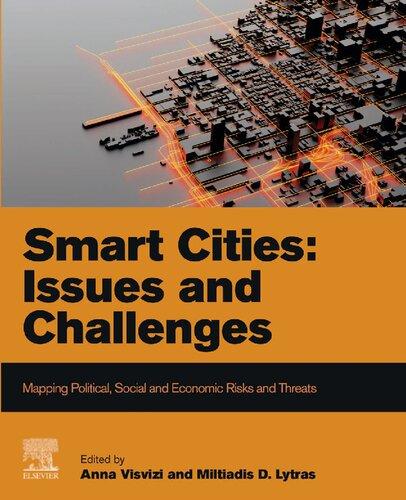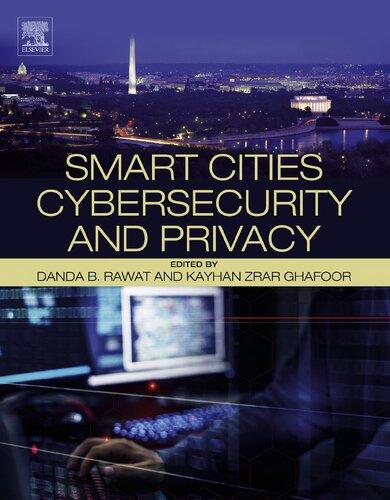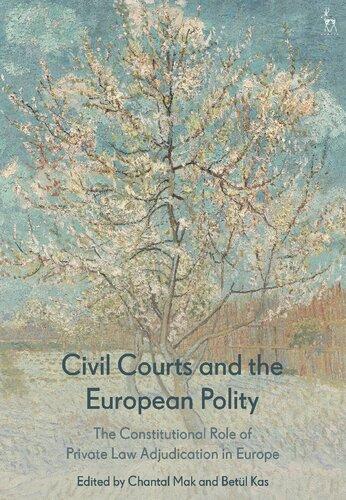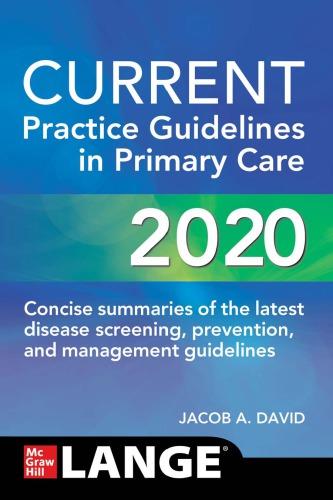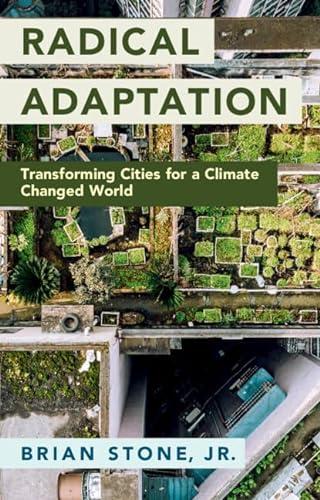https://ebookmass.com/product/smart-cities-issues-and-
Instant digital products (PDF, ePub, MOBI) ready for you
Download now and discover formats that fit your needs...
Electric Vehicles for Smart Cities: Trends, Challenges, and Opportunities
Evanthia A. Nanaki
https://ebookmass.com/product/electric-vehicles-for-smart-citiestrends-challenges-and-opportunities-evanthia-a-nanaki/
ebookmass.com
Smart Cities Cybersecurity and Privacy
Danda B. Rawat
https://ebookmass.com/product/smart-cities-cybersecurity-and-privacydanda-b-rawat/
ebookmass.com
The Handbook of Political, Social, and Economic Transformation Wolfgang Merkel
https://ebookmass.com/product/the-handbook-of-political-social-andeconomic-transformation-wolfgang-merkel/
ebookmass.com
Guide to the dissection of the dog 8th edition Edition Evans
https://ebookmass.com/product/guide-to-the-dissection-of-the-dog-8thedition-edition-evans/
ebookmass.com
Diagnostic Kevin R. Moore
https://ebookmass.com/product/diagnostic-imaging-pediatricneuroradiology-3rd-edition-kevin-r-moore/
ebookmass.com
Civil Courts and the European Polity: The Constitutional Role of Private Law Adjudication in Europe Chantal Mak
https://ebookmass.com/product/civil-courts-and-the-european-politythe-constitutional-role-of-private-law-adjudication-in-europe-chantalmak/
ebookmass.com
CURRENT Practice Guidelines in Primary Care 2020 Joseph S. Esherick
https://ebookmass.com/product/current-practice-guidelines-in-primarycare-2020-joseph-s-esherick/
ebookmass.com
Beyond Media Borders, Volume 1: Intermedial Relations among Multimodal Media Lars Elleström
https://ebookmass.com/product/beyond-media-bordersvolume-1-intermedial-relations-among-multimodal-media-lars-ellestrom/
ebookmass.com
The Sales Agility Code: Deploy Situational Fluency to Win More Sales Michelle Vazzana
https://ebookmass.com/product/the-sales-agility-code-deploysituational-fluency-to-win-more-sales-michelle-vazzana/
ebookmass.com
Radical Changed World Stone Jr.
https://ebookmass.com/product/radical-adaptation-transforming-citiesfor-a-climate-changed-world-stone-jr/
ebookmass.com
SmartCities:Issues andChallenges Thispageintentionallyleftblank
SmartCities:Issues andChallenges MappingPolitical,Social andEconomicRisks andThreats Editedby
AnnaVisvizi
MiltiadisD.Lytras
Elsevier
Radarweg29,POBox211,1000AEAmsterdam,Netherlands
TheBoulevard,LangfordLane,Kidlington,OxfordOX51GB,UnitedKingdom 50HampshireStreet,5thFloor,Cambridge,MA02139,UnitedStates
Copyright©2019ElsevierInc.Allrightsreserved.
Nopartofthispublicationmaybereproducedortransmittedinanyformorbyany means,electronicormechanical,includingphotocopying,recording,oranyinformation storageandretrievalsystem,withoutpermissioninwritingfromthepublisher.Detailson howtoseekpermission,furtherinformationaboutthePublisher’spermissionspolicies andourarrangementswithorganizationssuchastheCopyrightClearanceCenterandthe CopyrightLicensingAgency,canbefoundatourwebsite: www.elsevier.com/permissions
Thisbookandtheindividualcontributionscontainedinitareprotectedundercopyright bythePublisher(otherthanasmaybenotedherein).
Notices Knowledgeandbestpracticeinthis fieldareconstantlychanging.Asnewresearchand experiencebroadenourunderstanding,changesinresearchmethods,professional practices,ormedicaltreatmentmaybecomenecessary.
Practitionersandresearchersmustalwaysrelyontheirownexperienceandknowledgein evaluatingandusinganyinformation,methods,compounds,orexperimentsdescribed herein.Inusingsuchinformationormethodstheyshouldbemindfuloftheirownsafety andthesafetyofothers,includingpartiesforwhomtheyhaveaprofessional responsibility.
Tothefullestextentofthelaw,neitherthePublishernortheauthors,contributors,or editors,assumeanyliabilityforanyinjuryand/ordamagetopersonsorpropertyasa matterofproductsliability,negligenceorotherwise,orfromanyuseoroperationofany methods,products,instructions,orideascontainedinthematerialherein.
LibraryofCongressCataloging-in-PublicationData
AcatalogrecordforthisbookisavailablefromtheLibraryofCongress
BritishLibraryCataloguing-in-PublicationData
AcataloguerecordforthisbookisavailablefromtheBritishLibrary
ISBN:978-0-12-816639-0
ForinformationonallElsevierpublicationsvisitour websiteat https://www.elsevier.com/books-and-journals
Publisher: JoeHayton
AcquisitionEditor: BrainRomer
EditorialProjectManager: AndraeAkeh
ProductionProjectManager: R.VijayBharath
CoverDesigner: GregHarris
TypesetbyTNQTechnologies
3. Participationmethods...
4.
CHAPTER5Smartcityasaplatformeconomy:civic
3.
4.
5.
6.
CHAPTER6Understandingsentimentsandactivitiesingreen
3.
4. RQ1:greenspaceeffects...
5. RQ2:impactoftime ...........................................................89
6. RQ3:greenspaceproximityeffect
7. RQ4:activities,sentiments,andrecommendations
8.
PART2Safety,security,resilience CHAPTER7Smartcityisasafecity:informationand communicationtechnology enhancedurban spacemonitoringandsurveillancesystems:the promiseandlimitations ........................................111
1. Introduction ....................................................................112
2. Architectureofinformationandcommunication technology basedurbanspacemonitoringand surveillancesystem. ..........................................................113
3. Applications ....................................................................115
4. Limitations......................................................................118
5. Visionandconclusion .......................................................120 References ......................................................................121
CHAPTER8Risks,hazards,anddisasters:canasmart cityberesilient? ..................................................125
1. Introduction.. ..................................................................125
2. Riskassessment.. .............................................................127
3. Literaturereview. .............................................................128
4. Disasterriskmanagement:theprocess.. ...............................131
5. Canasmartcitybearesilientcity?. ....................................140
6. Conclusions... ..................................................................144 Acknowledgments ............................................................144 References ......................................................................144
PART3Smartcities’sustainability CHAPTER9Smartcityasasteeringcenteroftheregion’s sustainabledevelopmentandcompetitiveness ......149
1. Introduction.. ..................................................................149
2. Cityasasocioeconomicandenvironmentalsystemanda steeringcenter .................................................................151
3. Steeringtheterritorialsocioeconomicsystem ........................153
4. Competitivenessandsustainabledevelopmentofsmart cities tworeconcilableprioritiesforpolicy .........................155
5. Smartcitiesintheprocessofchanges:adaptabilityversus impact ............................................................................163
6. Conclusions... ..................................................................165 References ......................................................................166
CHAPTER10Smartcitiesandthesearchforglobaltalent.......171
1. Introduction.. ..................................................................171
2. Smartcitiesandtheglobaltalent ........................................173
3. Conclusionsandrecommendations.. ....................................180 References ......................................................................182 Furtherreading... .............................................................184
CHAPTER11Knowledgesocietytechnologiesforsmart citiesdevelopment.............................................185
1. Knowledgesocietyinthenewera... ....................................185
2. Knowledgesocietyandnewtechnologiesinthegovernance ofcities.. ........................................................................186
3. Technologiesforsmarturbanplanning:acitizen-centric approach .........................................................................188
4. Conclusions. ....................................................................194 Acknowledgments.. ..........................................................194 References.. ....................................................................195
CHAPTER12Howcanartificialintelligencerespondto smartcitieschallenges? ....................................199
1. Introduction ....................................................................199
2. Mainchallengesinimplementingsmartcitiessolutions... .......200
3. Artificialintelligence:branchesandapplications.. .................204
4. Howartificialintelligencecananswerchallengesatvarious levelsofsmartcities .........................................................207
5. Conclusions. ....................................................................212 References.. ....................................................................213
PART4Globalcontexts CHAPTER13Aframeworkofessentialrequirementsforthe developmentofsmartcities:Riyadhcityasan example ............................................................219
1. Introduction ....................................................................220
2. Hypothesisandrequirementsofsmartcities... ......................222
3. Theframework. ...............................................................227
4. Riyadhcity. ....................................................................231
5. Contributionsandfuturework. ...........................................236 References.. ....................................................................238
CHAPTER14Definitionofpublicsafetypoliciesbasedon thecharacterizationofcriminaleventsusing volunteeredgeographicinformation,case study:Mexico ....................................................241 1. Introduction ....................................................................241
2. Crimeanalysiscasestudy:Mexico ......................................246
3. Densitycomparison ..........................................................257
4. Differentscalelevelanalysis... ...........................................258
5. Temporalpatterns... ..........................................................259
6. Conclusions. ....................................................................260 References.. ....................................................................261
CHAPTER15AnoutlookofafuturesmartcityinTaiwan frompost Internetofthingstoartificial intelligenceInternetofthings.............................263
1. Introduction ..................................................................264
2. DevelopmentofsmartcitiesinTaiwan ..............................276
3. Conclusions. ..................................................................278 References.. ..................................................................280
CHAPTER16Smartenergyinsmartcities:insightsfromthe smartmeterrolloutintheUnitedKingdom ..........283
1. Introduction. ..................................................................284
2. Thesmartenergyvision ..................................................285
3. Whatissmartmetering ...................................................285
4. Prosandcons... .............................................................286
5. Theconnectionbetweensmartmeteringandsmartcities. .....286
6. TheEuropeanUnionsmartmetermarket.. .........................288
7. Aim.............................................................................290
8. Methodology .................................................................290
9. Findings........................................................................293
Customer ......................................................................293 11. Government. ..................................................................295
Industry ........................................................................295
Academia......................................................................297
Media... ........................................................................299
Socialmedia..................................................................300 16. Summaryoffindings.......................................................302 17. Discussion... ..................................................................302 18. Conclusion.. ..................................................................303 19. Suggestionsforfuturesmartcitiesinitiatives... ....................303 References.. ..................................................................304 Furtherreading. .............................................................306
CHAPTER17Smartcityvisionandpracticesacrossthe KingdomofSaudiArabia areview....................309
1. Introduction ..................................................................310
2. KingdomofSaudiArabia:futurevision .............................311
3. Holisticapproachtosmartpractice....................................313
4. SmartcitypracticesinKingdomofSaudiArabia. ...............318
5.
CHAPTER18Reflectingon
1.
2.
3. Afewpointsontechnologyandsmartcities...
4.
Listofcontributors BanderA.Al-Saud
DepartmentofElectricalEngineering,KingSaudUniversity,Riyadh,SaudiArabia
AdelN.Alfassam
ArRiyadhDev.Authority,Riyadh,SaudiArabia
KhaledA.Alshehri
ArRiyadhDev.Authority,Riyadh,SaudiArabia
Estefanı´aSerralAsensio
FacultyofEconomicsandBusiness,KULeuven,Leuven,Belgium
SamaaBadawi
ArchitectureDepartment,MansouraUniversity,Mansoura,Egypt;EffatCollegeof ArchitectureandDesign,EffatUniversity,Jeddah,SaudiArabia
SaadHajBakry
DepartmentofComputerEngineering,KingSaudUniversity,Riyadh,Saudi Arabia
KwokTaiChui
DepartmentofElectronicEngineering,CityUniversityofHongKong,Kowloon, HongKongSAR
RahmaM.Doheim
ArchitecturalEngineeringDepartment,AssiutUniversity,Assiut,Egypt;Effat CollegeofArchitectureandDesign,EffatUniversity,Jeddah,SaudiArabia
Ma1gorzataDziemba1a UniversityofEconomicsinKatowice,FacultyofEconomics,Katowice,Poland
AhmedO.El-Kholei
ProfessorofUrbanPlanning,ArabianGulfUniversity,Manama,Bahrain AlshimaaA.Farag
ArchitectureDepartment,ZagazigUniversity,Zagazig,Egypt;EffatCollegeof ArchitectureandDesign,EffatUniversity,Jeddah,SaudiArabia
YungangFeng
SchoolofComputingandInformationSystems,TheUniversityofMelbourne, Parkville,Australia
GiovanniGuzma ´ n InstitutoPolitecnicoNacional,CIC,UPALM-Zacatenco,MexicoCity,Mexico
DaveKendal
SchoolofTechnology,EnvironmentsandDesign,TheUniversityofTasmania, Hobart,Australia
KateE.Lee
SchoolofEcosystemandForestSciences,TheUniversityofMelbourne, Parkville,Australia
KwanHuiLim
InformationSystemsTechnologyandDesignPillar,SingaporeUniversityof TechnologyandDesign,Singapore;SchoolofComputingandInformation Systems,TheUniversityofMelbourne,Parkville,Australia
RyanWenLiu
HubeiKeyLaboratoryofInlandShippingTechnology,SchoolofNavigation, WuhanUniversityofTechnology,Wuhan,China
Asuncio ´ nLo ´ pez-Arranz
FacultyofWorkSciences,UniversityofACorun ˜ a,ACorun ˜ a,Spain
BlancaLo ´ pez-Ramı ´ rez
InstitutoTecnologicodeRoque-TecnologicoNacionaldeMexico,Celaya Guanajuato,Mexico
EnricSerradellLo ´ pez
UniversitatObertadeCatalunya,Barcelona,Spain
MiltiadisD.Lytras
SchoolofBusiness & Economics,DereeCollege TheAmericanCollegeof Greece,Athens,Greece;CollegeofEngineering,EffatUniversity,Jeddah, SaudiArabia
OttoVikMathisen
DepartmentofBusinessAdministration,SRHHochschuleBerlin,Germany
HiginioMora
DepartmentofComputerScienceTechnologyandComputation,Universityof Alicante,Alicante,Spain
MarcoMoreno-Ibarra
InstitutoPolite ´ cnicoNacional,CIC,UPALM-Zacatenco,MexicoCity,Mexico
ElhamNaghizade
SchoolofEcosystemandForestSciences,TheUniversityofMelbourne, Parkville,Australia;DepartmentofInfrastructureEngineering,TheUniversityof Melbourne,Parkville,Australia
ManuelNieto-Mengotti
UniversityofACorun ˜ a,FacultyofEconomicsandBusiness,ACorun ˜ a,Spain
IsabelNovo-Corti
UniversityofACorun ˜ a,FacultyofEconomicsandBusiness,ACorun ˜ a,Spain
RaquelPe ´ rez-delHoyo
DepartmentofBuildingSciencesandUrbanism,UniversityofAlicante,Alicante, Spain
Laura-DianaRadu
DepartmentofAccounting,BusinessInformationSystemsandStatistics,Faculty ofEconomicsandBusinessAdministration,AlexandruIoanCuzaUniversity,Iasi, Romania
MadhulikaRao
DepartmentofBusinessAdministration,SRHHochschuleBerlin,Germany
LidaRashidi
SchoolofComputingandInformationSystems,TheUniversityofMelbourne, Parkville,Australia
KatarzynaRybka-Iwanska MinistryofForeignAffairsoftheRepublicofPoland
AnthonySimonofski
FacultyofEconomicsandBusiness,KULeuven,Leuven,Belgium
MariaE.Sørbye
DepartmentofInformationSystems,SRHHochschuleBerlin,Germany
VladimirStantchev
InstituteofInformationSystems,SRHHochschuleBerlin,Germany
GerritTamm
InstituteofInformationSystems,SRHHochschuleBerlin,Germany
Cla ´ udiaTorizRamos
UniversidadeFernandoPessoa,CEPESE-CentrodeEstudosdaPopulac¸a ˜ o, EconomiaeSociedade
MiguelTorres-Ruiz InstitutoPolite ´ cnicoNacional,CIC,UPALM-Zacatenco,MexicoCity,Mexico
PandianVasant
DepartmentofFundamentalandAppliedSciences,UniversitiTeknologi PETRONAS,PersiaranUTP,SeriIskandar,Perak,Malaysia
AnnaVisvizi
SchoolofBusiness & Economics,DereeCollege TheAmericanCollegeof Greece,Athens,Greece;EffatCollegeofBusiness,EffatUniversity,Jeddah, SaudiArabia
AnaIolandaVoda
DepartmentofHumanitiesandSocialSciences,InstituteofInterdisciplinary Research,AlexandruIoanCuzaUniversity,Iasi,Romania
JiaWang
SchoolofComputingandInformationSystems,TheUniversityofMelbourne, Parkville,Australia
YvesWautelet
FacultyofEconomicsandBusiness,KULeuven,Leuven,Belgium
YungChangWu
CollegeofBusinessAdministration,NationalHuaqiaoUniversity,Quanzhou, China
YenchunJimWu
GraduateInstituteofGlobalBusinessandStrategy,NationalTaiwanNormal University,Taipei,Taiwan
ShiannMingWu
CollegeofBusinessAdministration,NationalHuaqiaoUniversity,Quanzhou, China
Preface Thisvolumeand,indeed,theprocessofmakingitcometolive,attesttothekeytopic andthekeymessagethatthisbookconveys,i.e.,thatthedialogicalrelationship betweeninformationandcommunicationtechnology(ICT)andourlivesunfolds inthetheaterofmoderncities.ICTprovedtobethekeyenablerintheprocessof conceivingthisvolume,workingwithourauthorsandthePublisheraswewere changingthegeographicalvenuesand bydefault weretestingthedegreeof “smartness”ofthecitiesthatwevisited.Athens,Berlin,Warsaw,Rome,Trikala, Jeddah,Mons,MexicoCity,Ottawa,Barcelona,andNewYorkarejustafewof theplacesthatwehadtheopportunitytovisitwhenworkingonthisvolumeand seeintothewaysadvancesinICTareemployedtobenefitcities’inhabitants.
GiventhepotentialinherentinsophisticatedICT-enhancedtools,applications, andsystemsandthegreatcapacityofourengineerstoapplytechnicallyand technologicallycomplexsolutionstoeverydayproblemsandchallengesweface, itisabsolutelynecessarythattheremainingstakeholdersfollowthesuit.Inother words,asadvancesinICTbecomeevermoreaccessibleanduseable,itisnecessary thatregulatorsandpolicy-makersjointheconversationanddevelopcommensurate ICT-andsmartcities friendlyframeworksandstrategies.Butcertainly,thediscussiononsmartcitiesandthemakingofsmartcitiesrequirealsodirectinvolvementof thecitizens.Clearly,oneofthechallengesinthisrespectisthatmanyendusersof smartcityapplicationsareintimidatedbythetechnologicalaspectofICT-enhanced tools.Thewholeideaandthebroaderframeworkareincompressibletowaytoo many.Thus,therelevanceandthevalueaddedofsmartsolutionsareundermined.
Centralinthediscussiononsmartcitiesarequestionsofethicallyandsocially sensitiveuseofICT-enhancedtoolsandapplicationsinthecityspace,starting withissuespertinenttoprivacy,throughquestionsofdemocracy,participation, representation,andexpandingbeyondquestionsofinclusion,well-being,and prosperity.Ascitiestransitiontowardbeingsmarter,severalcontentiousissuesarise. Theseincludeseeminglyirreconcilablejuxtapositionssuchastheoneofhowmuch surveillanceandmonitoringisneededtoensuresafetyincityspaceor,forinstance, towhatextentfeedbackobtainedfromsocialmediaanddecisionsinfusedwiththat feedbackarelegitimate.Agreatnumberofquestionsareboundtoemerge.Thegood newsisthatresearchonsmartcitieshasbeenunfoldingforaconsiderablewhile now.Today,themomentumhascomeforthediversestrandsofresearchonsmart citiestoengageindialogandcross-fertilizediscussionotherwisetakingplaceina considerabledisconnect.
Thisvolumeoriginatesintherecognitionthatsmartcitiesoughttobebetter understoodbyabroadspectrumofstakeholders.Thetechnologicalsophistications ofseveraltopicspertinenttosmartcitiesresearchnotwithstanding,therationale behindthisvolumewastofacilitatereadersotherwiseignorantofthetopictoget
afairideaofwhatasmartcityactuallyis.Thevolume thatwearesopleasedto sharewithourreaders todayestablishesaplatform,ameetingpointforallstakeholdersinvolvedinthemakingofsmartcities,toacquireaninsightintokeytopics andissuesthatinfluencetheprocessofcitiestransitioningtobecomesmarter.
TheEditors
AnnaVisvizi MiltiadisD.Lytras
Acknowledgment Thiseditedvolumeistheoutcomeofarealizationthattoalargepartofoursocieties smartcity,seenasaconceptandpolicy-makingconsideration,remainsan under-understoodconcept,frequentlyassociatedonlywiththedebateonadvances ininformationandcommunicationtechnology.Thisbook,bypromotingatruly inter-andmulti-disciplinaryapproachtothestudyofsmartcities,seekstobypass thisissue.Inthisway,ithopestoinvolveinthedebateonsmartcitiesaudiences otherwisenotparticularlykeenondoingso.Thisvolumeoffersacomprehensive insightintowhatsmartcityis,whatitisnot,andhowitisevolving.Thechapters includedinthisvolumeattesttothat.Wearegratefultothecontributingauthors, whorespondedtoourinvitationtojointhisproject.Wewouldliketothankthem fortheirhardworkandpatience.WearegratefultothePublisherandtheentire teamthatdealtwiththebookproductionprocess.
TheEditors AnnaVisvizi MiltiadisD.Lytras
Thispageintentionallyleftblank
Smartcitiesresearchand debate:whatisinthere? AnnaVisvizi1,
2,MiltiadisD.Lytras1, 3
SchoolofBusiness & Economics,DereeCollege TheAmericanCollegeofGreece,Athens, Greece1;EffatCollegeofBusiness,EffatUniversity,Jeddah,SaudiArabia2;Collegeof Engineering,EffatUniversity,Jeddah,SaudiArabia3
Chapteroutline
1. Introduction Severaldevelopmentshaveledtoanincreasedinterest,andaresultantdebate,onthe possibleuseofinformationandcommunicationtechnology(ICT)incitiesandurban space.Asthedebategainsonmomentum,agreatnumberofnewinsightspopulate thefield,thusostensiblyredefiningitanddelineatingitsdisciplinaryboundaries anew.Apartfromscholarlyresearchonsmartcities,thetopichasbeenskillfully takenupbythinktanksandconsultingfirms,makingsmartcitiesoneofthekey topicsdiscussedinfancysettingsandenvironments.Interestingly,ifsmartcities arethebuzzwordofthepopulardebatetoday,sustainabilityhasbecomethe keyworddefiningthethrustofthatdebate(Lytrasetal.,2019).Thesmartcities sustainabilitynexusthatthisdebateembodieshasbeendrivenbyanumberof factors,thevalidityandrelevanceofwhichhavebeenrecognized,amongothers, intheUnitedNationsSustainableDevelopmentGoalsAgenda,especiallyGoal11 “Sustainablecitiesandcommunities”(UN,2015).
Followinginthefootstepsoutlinedinthe1976UnitedNationsConferenceon HumanSettlementsandSustainableUrbanDevelopment,Goal11highlightsthat itisnecessarytothinkabouturbanspaceinaholisticmanner.Thatis,ourthinking aboutcitiesandurbanspaceshouldbefoundedontherecognitionofadynamicnatureofcitiesandurbanspace,theirevolution,andhencethenecessitytomakeboth citiesandurbanspaceresilienttorisks,threats,andotherkindsofchallenges (Klopp,Petretta,2017;Lutzkendorf,Balouktsi,2017)andsustainable.Increasingly, thedebateonsmartcities,moreorlessexplicitly,endorsesthenormativeand
SmartCities:IssuesandChallenges. https://doi.org/10.1016/B978-0-12-816639-0.00001-6 Copyright © 2019ElsevierInc.Allrightsreserved.
prescriptivecomponentsthattheSDG11entails.Asaresult,thespecifictothat debatefocusonthevalueaddedofICT-enhancedtoolsandapplicationsisseenas afunctionofthebroaderconceptofsustainability.Notsurprisingly,therefore,given thecentralityofpolicy-makingconsiderationsgearedtowardsustainabilityin contemporarypoliticaldiscourse,havingendorsedtheimperativeofsustainability, thedebateonsmartcitiestoohasturnedintooneofthemosttopicalfieldsof academicresearchandpopulardebate.
Apartfromthebiggernarrativeonsustainability,theexponentialgrowthininterestinsmartcitieshasalsobeentriggeredbysuchfactorsasincreasingpaceofurbanization,growingawarenessofthecomplexchallengesthatcitiesface,followed byareconceptualizationofcitiesashubsofhumaninteraction,andindeed,centers ofauthority.Liberalizationoftrade,increasinglabormobility,increaseddynamicof clusterdevelopment,andatendencytodecentralizestateadministration,reinforce theprocessofcitiesgraduallyturningintocentersofauthority.Thisisfollowed by“thesinkingin”oftheunderstandingthatthefourthIndustrialRevolutionistakingplacehereandnow,andsoinfluenceseveryaspectofourlives.Thedebateand policy-makingconsiderationsthatfollowendorsetherecognitionofthevalueadded ofICTasanenablingandmitigatingfactorincityspace.Inotherwords,today,as neverbefore,thetimeisripenotonlytodiscusssmartcitiesasapieceandparcelof thebroaderprocessofsocioeconomicgrowthanddevelopmentbutalsotodevise strategiesthatwillmakecitiessustainable.
Inthisview,alsothenotionofsustainabilityrequiresafewwordsofclarification. Itistostressthatsustainabilityisnotonlyaboutenvironmentalsustainabilitybut alsoaboutestablishingasocioeconomicequilibriumallowingindividuals,societies, andcurrentandfuturegenerationsofcities’inhabitantstogrowandexcel,to exercisecivilliberties,tolivewell,andtoprosper.Topicspertinenttotheseconsiderationshavebeenlongpresentinthedebateonsmartcities(Vanolo,2016;Mattern, 2017;Deakin,2013).Otherold newtopicsstepinthedebatetoo,including,for instance,theimperativesofethicallyandsociallysensitivewaysofusingtechnologicaladvancesincityspace(Visvizietal.,2017;MazzucelliandVisvizi,2017). Anotherissuethatappearsprominentlyinthedebateistheveryaccessibilityand usabilityofICT-enhancedservices(Visvizietal.,2019)seenasameasureofcities beinginclusiveanddemocratic(LytrasandVisvizi,2018;Barns,2018).Inbrief, severalavenuesofresearchinsmartcitiesdebatecanbeidentified(Bibri,2019), and,asseveralauthorsemphasize,researchonsmartcitiesrequiresinter-andmultidisciplinaryapproachesiftheplethoraoftopicsandissuesthatarepertinenttothe fieldaretobeeffectivelyaddressed(Kitchin,2015,2016VisviziandLytras,2018a).
Theinterestingpointthatneedstobemadehereisthatevenifoverthepast decadethedebateonsmartcitiesdevelopedexponentially,respectivearguments andconversationsrunlargelyinparalleltoeachother,i.e.,theywerefrequently confinedtoveryspecificfields/disciplinesofresearcheffectivelypreemptingdialog andcross-fertilizationamongdiversefieldsofresearch.Today,drawingonworkand publicationspertainingtourbangeography,urbanstudies,architecture,engineering, computerscience,butalsosociology,politicalscience,communicationstudies,and
manymore(Datta,2015;Marvinetal.,2015;Karvonenetal.,2018;WiigandWyly, 2016;CardoulloandKitchin,2018),inter-andmultidisciplinaryapproachesarenot onlywell-receivedbut,indeed,encouraged.Clearly,onlybydrawingfromeach other’sworkwillbeabletodeepenourunderstandingofwhattheconceptofsmart citiesentails,toenhancetheexistingconceptualtoolsandframeworks,andthereby moreeffectivelyinfusethepolicy-makingprocesswithvalidresearchfindings.
Thisvolumerecognizesthescope,thebreadth,andtheilluminatinginsightsthat scholarsactiveinthefieldhavebroughttothedebateoverthepastdecades,thereby addingtoourknowledgeandunderstandingofthevarietyofissuesandtopicspertinenttosmartcities.Featuringcontributionsofscholarsactiveinfieldsasdiverseas sociology,politicalscience,internationalrelations,geography,urbanstudies,architecture,computerscience,andengineering,thisvolumebringsselectedstrandsof thedebateonsmartcitiestogethertoshowcasethebroadconceptualandempirical frameworkagainstwhichthesmartcitiesdebateunfoldstoday.Inthissense,this volumeseekstoaddtotheongoingdebateand,byreachingdiversestakeholders, includingalsothoseotherwisenotreallyinvolvedwiththetopic,steertheirinterest andencouragethemtomeaningfullyjointhedebate.Theremainderofthischapteris structuredasfollows.First,thecaveatsrelatedtothedefinitionofsmartcitiesare discussedbriefly.Then,afewpointsontheconceptualframeworkunderpinning thediscussioninthisvolumearemade.Inthethirdmove,anoverviewofkeytopics andissuesaddressedinthisbookispresentedalongwithamoredetaileddescription ofchaptersincludedinthisbook.Thenconclusionsfollow.
2. Smartcities:definitionalcaveats Eveniftheacademicdebateonsmartcitiesmaturesandevermoresophisticatedinsightsintothesphereofthetechnicallypossibleinurbanspaceareproposed,forthe preponderantpartofcitydwellers,smartsolutionsremainamisunderstood,unrecognized,orfearedproductof“sciencefiction”(LytrasandVisvizi,2018).Inother words,considerablegapexistsbetweenwhatcitizensexpectvis-a ` -visICT-enhanced solutionincityspaceand,importantly,whattheyareabletouse.Fromadifferent angle,manysmartserviceshavebeenembeddedinthecityspacesoseamlessly thattheirexistencehasbecomeapartofthedailyroutineformasses.Inthissense, manyaspectsofwhatwouldbereferredtoassmartcityapplicationsorsolutions remainsunderrecognizedfortheveryusersofthosesolutions(Lytrasetal., 2019).Inbrief,asthepublicdebateisfilledwithreferencestosmartcities, frequently,confusionstepsinastowhatexactlytheconcept“smartcity”implies, whatisatstake,andhowitfitsinthebroaderframeworkofdebatesunfoldingin otherfieldsanddisciplines.Thisvolumeseekstonavigatethisissueandmake theconceptofsmartcitiesmoreapproachabletothosewhohavehadtheopportunity toengageinitsthoroughstudy.
Severalconceptualandmethodologicalissueshavetobeclarifiedbeforeoutliningthisvolume’scontent,includingtheverydefinitionofsmartcity,andindeed
otherconceptsthattendtobeused wronglyso interchangeablyinthedebate. Oneofsuchconceptsistheconceptofmegacity.Frequentlyconflated,thereisasignificantqualitativedifferencebetweenmegacityandsmartcity,witheachofthem triggeringquitedistantresearchquestionsandtopics(VisviziandLytras,2018a). Amegacitycanbedefinedasan“urbanagglomerationwithatotalpopulationof 10millionpeopleorgreater,consistingofacontinuousbuilt-upareathatencompassesoneormorecitycentersandsuburbanareas,economicallyandfunctionally linkedtothosecenters”(Safariketal.,2016).Itcanbearguedthatmegacities researchoriginatesfromverypragmaticconsiderationsrelatedtospatialconsiderations,urbaninfrastructureplanning,includingurbandesignandresilienceofurban space,andrelatedquestionsofgovernanceandsustainability.Thekeycognitivelens appliedinthedebateonmegacitiesaredefinedbythequestionsofpopulationsize, geographicallocation,andexposuretorisksandthreats,includingthoserelatedto geographicallocationandsonaturaldisasters,etc.(Safariketal.,2016;Meerow, 2017;Commons,2018).Thesmartcitiesdebate becauseofitsemphasisonharnessingadvancesinICTseenasafunctionofcitizens’well-being addsaqualitativelynewkindofconsiderationstothedebateoncitiesingeneral.Seeninthisway, amegacitymightbenefitfromsmartapplicationsandhencebecomesmarter;yet,a smartcitywillnotnecessarilybecomeamegacity.Inotherwords,thetwoconcepts areontologicallyseparate.
Althoughsmartcityisnotanewconcept,thepastfewyearshavebroughtsubstantialdevelopmentsbothinthefieldofresearch(BibriandKrogstieb,2017;Bibri, 2018;ReddyKummithaandCrutzen,2017;Kitchin,2019andRose,2017)andin theveryfabricofcities,includingtheproblemstheyface,howtheseareresolved, etc.(Anthopoulos,2017).Therefore,asthedebateonsmartcitiesgainsitsnewmomentum,thegroupofstakeholdersinvolvedinthedebatebroadens,andnewinsights arebroughttothediscussiononsmartcities.Drivenbyadvancesinsophisticated ICTandanaccompanyingsetofconsiderationsoriginatingfromsocialscience, computerscience,naturalsciences,engineering,architecture,andsoon,today, smartcitiesresearchrevolvesaroundideasandconsiderationsrelatedtothepossibilityofgeneratingaddedvaluetoacity’sinhabitantsbymeansofICT-enhanced services(VisviziandLytras,2018b).Clearly,thefocusofsmartcitiesresearchis directedatnewICT-enhancedservices,serviceresponsiveness,andsustainability. However,otherconsiderationssuchasagencyofindividualcityinhabitants,society, anddiscoursesandideologiesthatcometoplayintheprocessofmakingacitysmart formanequallyimportantpartofthedebate(CardulloandKitchin,2018;Cardullo etal.,2019).
Giventhediversityofdisciplinary,conceptual,andempiricalapproaches employedinthesmartcitiesdebate,thereisnosingledefinitionofwhatasmart cityentails.Asmartcitymaybereferredtoasrepresentingan“urbandevelopment model”gearedtowardtheutilizationofhuman,collective,andtechnologicalcapital withinurbanagglomerations(Angelidou,2014,2015;Ahvenniemietal.,2017).In thisvein,asmartcitymayalsobeconceptualizedas“anultramodernurbanarea thataddressestheneedsofbusinesses,institutions,andespeciallycitizens”
(KhatounandZeadaly,2016).Inacommonsensicalmanner,theconceptofsmart cityisassociatedwithadvancesinICTandthepossibilityofeffectiveuseofICTenhancedtoolsandapplicationsincityandurbanspace.Smartcityisthusbound tobeanaggregateconceptthathighlightstheinterconnectednessofdiverseaspects ofacity’sfunctioning,includingquestionsofgovernance,participation,andrepresentation;economy;energy;mobility;living,andwell-being;andofcourseenvironment.Theimperativeofsustainability,asexplainedearlier,framesthese considerations.Consensushasconsolidatedthatthefollowingconceptualand policy-makingpillarsdelineatesmartcity,seenasaconceptandpolicy-making imperative:economy,mobility,energy,environment,governance,andliving.A casecanbemadethatitisthespacein-betweenthesepillars,aspacepopulated byissuessuchas(tele)communication,representation,participation,safety,security, inclusiveness,transparency,accountability,accesstoinformation,etc.,andthatisas validasthepillarsthemselves.Whatbringsthesepillars,andthespacein-between them,together,andhencemakescities‘smart’,isresponsible,visionary,ethically andsociallysensitiveuseofadvancesinICTgearedtowardcities’sustainability.
3. Aboutthebookandtheconceptualframeworkitadopts Thediscussioninthisvolumeisdividedinfourparts.Part1looksatsmartcities fromabroadperspectivethatincorporatestherecognitionthatwiththeonsetof thefourthIndustrialRevolution,thedegreeofchangeoursocietiesareboundto embarkonisimmense(VisviziandLytras,2019).Consideringtheincreasing paceofurbanization,citiesandurbanspaceareboundtoserveasthevenuewhere thenonlinearevolutionofoursocietieswillunfold.Questionsofmodesandmodels ofgovernance,democracyandcivicparticipation,socialinclusion,intergenerational solidarity,andprosperitybuildingformjustafewofthedimensionsalongwhich thatevolutionwillunfold.Clearly,thelatterwillrequirebothphysicalstructures andvirtualspace,i.e.,servicesandplatformsfacilitatedbyadvancesinICT.In thissense,thequestionofmanagingurbanspaceacquiresanewdimension.Chapters2,3,4,and5formthissectionsketchandexplorethekeylinesoftheargument eitheralreadydiscussedindetailintheliteratureorstillwaitingtobeexplored, includingcivilliberties,participation,democracy,andsocialinclusioninacontext infusedwithnewICT-enhancedtoolsandapplications.
Inpart2,questionsofsafety,security,andresilienceofcitiesandurbanspaces arediscussed.Thestartingpointofthatdiscussionistherecognitionthatsafetyand securityareontologicallydistinct(Visvizi,2015).Thatis,safetyisaconceptmost closelyassociatedwithpublicspaceand,therefore,isbestdefinedbyreferenceto well-beingandstability.Security,ontheotherhand,denotesabsenceofthreat. Thereallyimportantpointthatshouldbemadehereisthatsafety,embeddedinpublicsphereandpublicspacegovernance,necessitatesquitedifferentpolicytoolsand policyresponsesthanthe“harder”conceptofsecuritydoes.Inotherwords,whereas safetywouldbemostcloselyassociatedwithpolicingandrelevantregulatory
frameworks,security,associatedwithexternalthreat,mightimplytheuseofthemilitaryandrelatedtools.Thatis,keyinthediscussiononsafetyistheacknowledgment thatitispossibletoidentifynascentrisksand,thus,preemptthem(Beck,1992). Hence,withregardtosafety,mostcloselyassociatedwithmeasuresandtoolkits specifictointernalpolicy,e.g.,policingandrulesofpublicorder,emphasisisplaced onprevention.Security,incontrast,requiresmeasuresmostcommonlylinkedtothe necessitytoreact,i.e.,toaddressimminentthreatstoourpopulationandinfrastructure.Insmartcityspace,thedistinctionbetweensafetyandsecurityisvitalinthatit highlightsthesensitiveandyetnecessaryissueofdivisionofcompetencesamong agenciesdealingwithsafetyandsecuritywithinthesamecityorthesameurban space.Itsuggeststhatdifferentsetsofpolicyprerogativesanddifferentlogicsof actionwillunderpinrespectiveagencies’action.ItalsosuggeststhatICTenhancedservicesandapplicationsdesignedtomanagebothsafetyandsecurity incityspaceareinteroperable.Chapters6,7,and8includedinthispartoffera fairinsightintothemostpressingissuesanddevelopmentsinthisrespect.
Bymeansofexpandingthediscussion,inpart3ofthisvolume,newperspectives toourthinkingonsmartcitiesarepresented.Foundedontherecognitionthat followingtheadoptionofICT-enhancedtoolsandapplicationscitiesacquireayet anothertooltoboasttheirefficiencyandsustainability,thechaptersincludedin thispartfrequentlyimplicitlyviewsmartcitiesasthenascentcentersofpower, influence,andauthority.Inthissense,theauthorsofChapters9,10,11,and12 addressissuesasdiverseandassalientasthoserelatedtotalentmanagement,knowledgemanagement,clusterdevelopment,andmanymore.ICT-enhancedtoolsand applicationsareseeninthiswayasthekeyenablersofsustainablegrowthanddevelopmentofcities.Thevolumecloseswithaselectionofcarefullyconceptualizedand elaboratedcasestudies,includingthatofMexicoCityandRiyadh,aswellas Taiwan,SaudiArabia,andtheUnitedKingdom.Thecasestudiesaddthevery muchneededempiricalangletothediscussionintheprecedingchapters.The followingsectionoffersadetailedoverviewofthechapters’content.
4. Reviewofthechapters’content FollowingthisintroductoryChapter1,inChapter2,titled“Democracyandgovernanceinsmartcity,”Cla ´ udiaTorizRamosdiscussessmartcitiesastheencounterof growingurbanizationwithtechnologicalinnovation.Astheauthorargues,smartcitiesaresaidtohaveapotentialtofoster“livability,workability,andsustainability” (SmartCitiesCouncil,2016).ThesalientquestionthatTorizRamosposesisdo smartcitiesalsohaveapotentialtofosterdemocracy?Toaddressthisquestion, thediscussioninthechapterinitiallyaddresses“smarturbanism”asfunctional andnormativeutopiaanddiscusseswhetherdemocracyisnecessaryandfeasible insmartcity.Itisarguedthatdemocracyinsmartcityisamatterofchoice,rather thanadeterministicoutcomeorsheerunfeasibility.Thereisindeedariskthat functionalconcernswillprevailoverdemocraticchoices,giventhepowerful
technologicalinstrumentsonwhichthesmartcityisbuilt,andtheirpossibleconnectionswitheithermarket-biasedoptionsorauthoritariansurveillance.Examplesof democraticproceduresinthesmartcity networking,decentralization,increased transparencyandaccountability,newmodesofpopularparticipationviathevirtual agora,andhencecollaborativedemocracyandcitizens’empowerment are discussed.
InChapter3,titled“Civicparticipationinsmartcities:theroleofsocialmedia,” MarcoMoreno-IbarraandMiguelTorres-Ruizquerytheprospectofboostingcivic participationincontextofsmartcitiesviamoreeffectiveuseofsocialmedia.Asthe authorsargue,citiesfacetheproblemsofaccessibilityofinformation.Thishinders citizens’participationintheprocessofday-to-daygovernanceofthecityspace. However,whatifsocialmediawasemployedmoreeffectively,i.e.,precisely,to enablecitizenstoacquireinformationnecessaryforboththeirdailylivesandcivic engagement?Astheauthorsargue,socialmediahasbecomeaveryprominent sourcetoobtaindataandinformation.Ascitiesareexposedtoavarietyofchallengessuchashealthcare,environment,energyconsumption,trafficcongestion, housing,education,publicsafety,economicdevelopment,demographics,diversity, andinclusiveness,theabilityoftappingintodataandinformationandtheprospect ofengaginginmeaningfuldiscussionwithallstakeholdersbearthepromiseof addressingthesechallengesandrisksmoreefficiently.
Chapter4,titled“Citizenparticipationinthedesignofsmartcities:methodsand managementframework,”byAnthonySimonofski,Estefanı´aSerralAsensio,and YvesWautelet,queriestheprospectofcitizensbeingactivelyinvolvedinthedesign ofsmartcityspace.Astheauthorsargue,overthepastfewyears,smartcitieshave attractedconsiderableattentionbecausetheyareconsideredaresponsetothecomplexchallengesthatmoderncitiesface.Smartcitiescanprovideinnovativesolutionsinvariousdomainssuchasenvironment,economy,mobility,andsafetywith technologyasenabler.However,thisisonlypossibleifthecitizens,theendusers, areinvolvedinthedesignofthesmartcity.Theaimofthischapteristoprovide arepositoryofmethodsandusefulguidelinestomanagecitizenparticipationin thedesignofsmartcities.
InChapter5,titled“Smartcityasaplatformeconomy:civicengagementand self-employmentinfocus,”ManuelNieto-Mengotti,Asuncio ´ nLo ´ pez-Arranz,and IsabelNovo-Cortimakeacaseforplatformeconomyanditsbenefitsincontext ofsmartcity.Currently,mostcompaniestendtooutsourceproductiveresources,takingadvantageofthevirtualizationcapacityoftheirjobs,thankstotheextensive coverageofconnectivitynetworksdeployedincities.Thissituationfacilitatesthe entryintothemarketofnewagentsthatcansolvethisgrowingdemand.Accordingly,thechapterexaminesdifferentbusinessplatformscapableofimplementing compatibleself-employmentactivities,tofacilitatelaborinsertionthroughsustainableandqualityself-employmentthatrespondtothedemandforservicesincities.
Chapter6,titled“Understandingsentimentsandactivitiesingreenspacesusinga socialdata drivenapproach,”byKwanHuiLim,addressesthequestionofcitizens’ well-beingseenasafunctionofgreenspaceavailabilityincities.Greenspacesare

